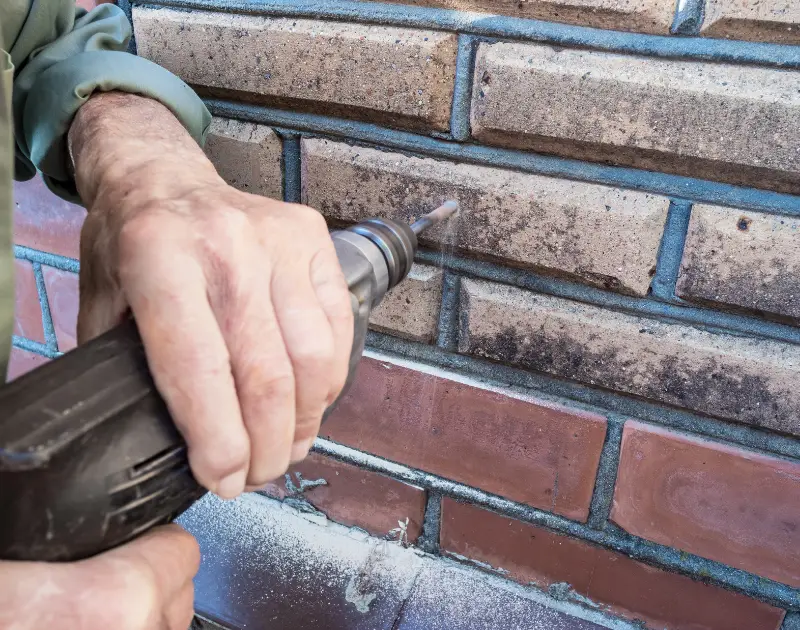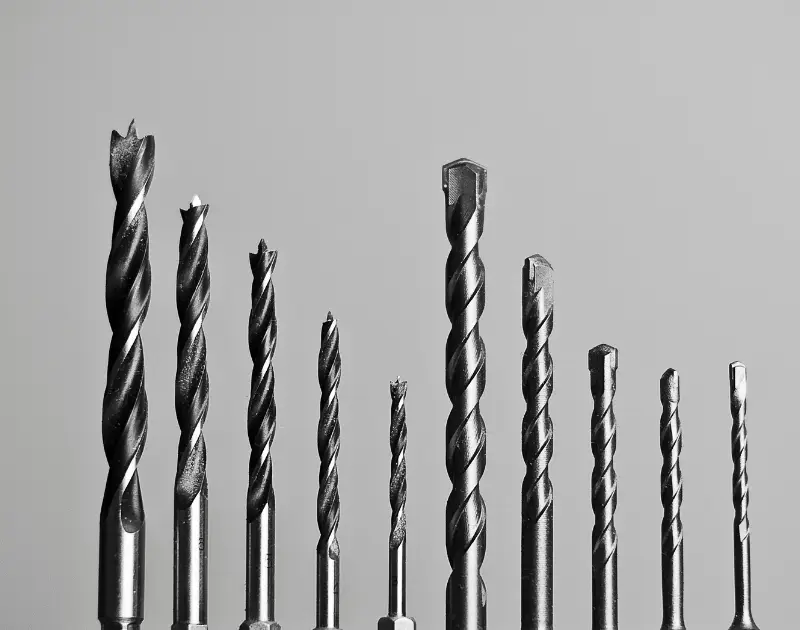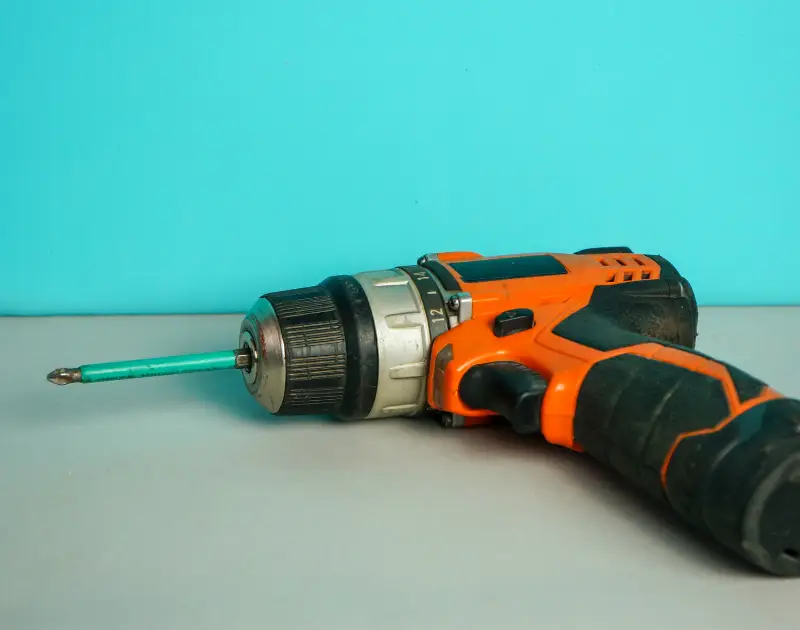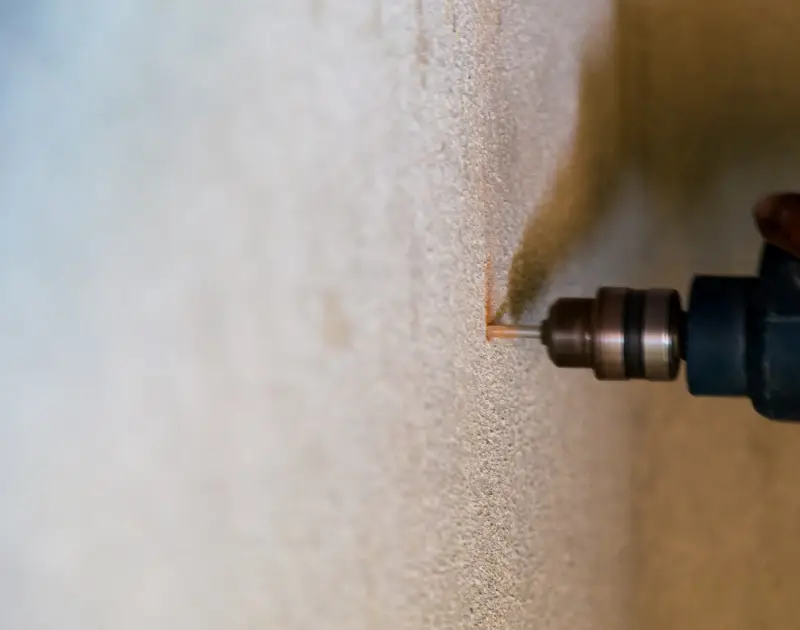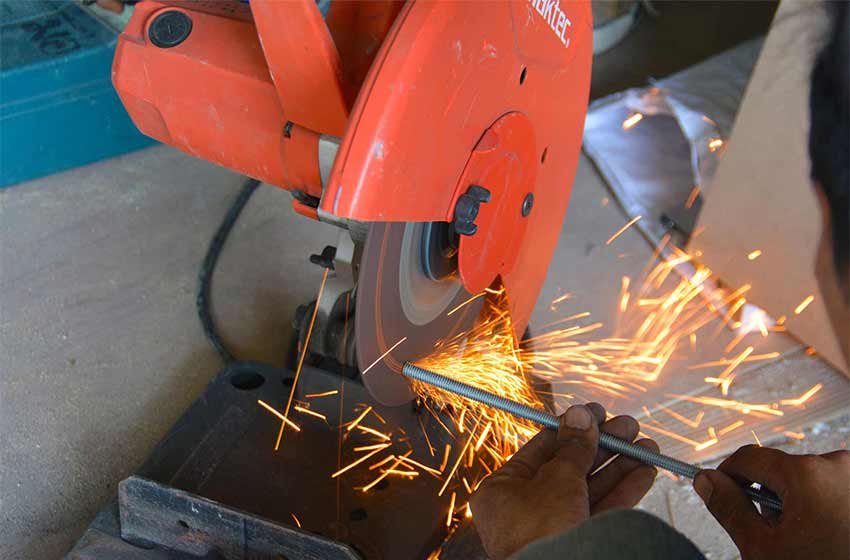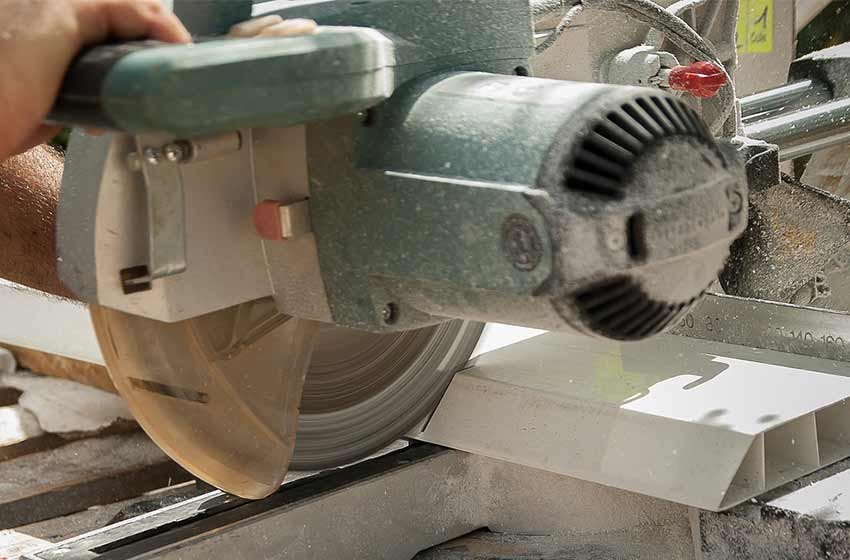Our Guide To Drilling Brick Without a Hammer Drill
Plenty of DIY jobs around the house require you to drill holes in brick, whether you are putting up a new front doorbell or mounting a TV in your home.
The best type of drill for drilling into a brick surface has to be a hammer drill, but what happens if you only have a regular power drill on hand?
Well, you can drill into brick with regular drills, although it will take more time than doing so with a hammer drill, it is only possible to do this with tungsten carbide drill bits as they are a more durable hard-wearing bit.
To find out more about what kind of bit to use on your regular power drill for drilling brick, why hammer drills are better and how to drill without one, we have composed an informative guide below with everything you need to know.
Why Is a Hammer Drill Better For Drilling Through Brick?
A hammer drill is always the best choice for drilling through a piece of brick material, these drills combine a rotary drilling action with pulsing hammer forces to drill holes into brick with ease, helping you drive through hard material without the drill overheating or breaking.
Although a hammer drill might not perform great when drilling standard materials such as wood, many now come with modes that allow you to switch the hammer drill to perform as a driver or regular drill too.
It is very possible to use a regular drill for drilling into brick but you will need the right bit which we will explain next in our guide, do note that your drill might be slower when it comes to performance however as they are not designed for these heavy-duty jobs.
We have listed out a few advantages of a hammer drill below.
- Multi-use - As we mentioned above, most hammer drills can now be switched between three modes allowing you to use it as a driver as well as a normal drill.
- They run fast - Even if you use a masonry bit on your regular drill it still will take longer to drill holes through the brick surface than a hammer drill would as it does not have the hammer pulses.
- Much more durable - Most types of drills are not designed for heavy-duty use on actual brick or concrete, so they might be more vulnerable to overheating as the motor will try and compensate for extra power.
What Type Of Bit Do I Need For My Regular Drill?
Before we dive into how to drill through brick surface with a normal power drill you need to make sure you understand the type of bit you need for drilling into a brick wall.
On the market, there are a few different types of bit to choose from -
- High-speed steel (HSS) - High speed-steel drill bits are the most common kind of bits used in regular drills and can cut all soft materials such as wood or plastic, these are not suitable for use on hardened brick materials, however.
- Colbat - Colbat is one of the hardest drill bits under carbide, these types of drill bits can be used to cut steel and other hard iron.
- Titanium - Titanium drill bits are a stronger impact drill bit than HSS bits but do lose their coating over time with use.
- Carbide - Carbide is what we will use with your normal drill for making holes in solid brick materials, this is the hardest type of bit on the market so is very durable, but it is also the most brittle so make sure you use it properly otherwise it can break.
As regular drills are not as powerful as hammer drills are, you will need a good drill bit size variety so as you can work your way from small to big when creating a hole in size steps.
Ensure you have a star drill bit on hand too with the diameter between your pilot hole and main hole to break away additional hard material in the hole.
How To Drill Into Brick With a Regular Drill
Now we know the type of sharp tungsten carbide drill bit for the regular drill you need, we can get into our step by step guide on how to drill any type of brickwork with your normal drill.
Tools Needed
- Masonry carbide drill bits.
- Protective equipment such as; safety goggles, hearing protection and gloves.
- Tape measure and pencil.
- Mask.
- Compressed air (for cleaning the hole).
- Water/lubrication.
- Broom (for the cleaning).
Step by Step Guide
- Step one - Wear PPE, it is so necessary before you start drilling into brickwork to wear a mask, some hearing protective equipment and safety goggles to protect yourself from the brick dust created when drilling holes.
- Mark & measure your holes - To measure the hole size for drilling you need to consider the position, depth and size. Use a tape measure and pencil to mark the hole size and always double-check the position of the hole beforehand so as you can not make a mistake.
- Fit your drill bit - As we mentioned above, you should have some new carbide drill bits for drilling holes into brick wall, these should be in different sizes and sharp, a star drill bit is useful to have on hand too.
- Start drilling in size steps - To drill through a brick surface correctly you need to make a pilot drill hole in the brick wall, to begin with then transition to large-sized drill bits as you reach the desired size of the hole in the solid brick wall. Grip your drill tightly with two hands while keeping the device balanced and don't apply too much pressure, switch to bigger diameter drills bits when needed, it's a good idea to have a few drill bits handy for this stage.
- Use water to cool it down - As the average power drill is not technically meant for drilling through bits of brick, it is likely it will overheat, therefore you need to make sure you are cooling the masonry drill bits down with water or lubricant. To do this apply water on the carbide masonry drill bits regularly and the hole in the brick wall.
- Scour blockages - If you reach a time where your entire drill cannot go any further then it is probable you have encountered a blockage, to get rid of this you need to use a star drill bit to try and break up the blockages or a hammer and drill. too much force when drilling into brick can break your drill so be careful.
- Clear dust - It is very important to clear dust from your drill while drilling by removing it a couple of times in and out during the method for drilling, this reduces friction, keeps the flutes of your drill bit clear from dust and removes excess from the hole.
Tips For Drilling Into Brick With a Regular Drill
As long as you have sharp masonry drill bits on hand, drilling a hole into brick using your normal drill shouldn't take too long, we have listed a few of our best tips below to help you get the best result during the process.
- Go slow - Never try and drill into pieces of brick at a high speed, this will encourage the device to overheat and damage the drill bit, instead go at a low speed for drilling, this optimum speed should be around 300 and 700 rpm.
- Always use a pilot drill first - Using a pilot drill bit, to begin with, is essential for drilling through brick as it stops it from cracking and makes it easier for your drill, never be tempted to start drilling with a large bit first.
- Asses the brick and mortar - Many people wonder if they should make a hole in the brick material itself or the mortar instead, typically, it is best to stick with the brick as this will hold up longer and can support more weight if you are planning to hang anything on the hole. However, if the brick you are planning to drill into has cracks or is a brittle brick that is old, drilling the mortar might be the better choice.
- Take breaks - It is critical when drilling to take breaks, regular drills are not designed for this heavy-duty work, breaks allow the drill's motor and bit to cool down and recover.
- Get a drill bit sharpener - Drill bits will get blunt quickly when used for drilling into brick so having the appropriate sharpener on hand can save you money although resharpened bits might not be as efficient.
Frequently Asked Questions About Drilling Into Brick Without a Hammer Drill
Can you use an impact driver to drill into brick?
With a hex shank drill bit, it might be possible to drill into brick, but due to the driver motion, this will likely not create the hole desired, a driver might be useful to break away the brick material, to begin with.
Will my drill overheat if used to drill brick?
Your drill and the drill bit will have to work harder to drill through tough material and heat will build up due to the friction and dust in the hole, nevertheless, you can reduce the chances of it overheating by using water and taking breaks.
How do I drill at tough brick sections?
If you need to drill at a tough brick section on the wall then you will need a star head drill or a cold chisel for the job, start by hitting the hole with a hammer then place the drill inside and hit with a hammer again, turn the bit 45-degrees around then hit it again.
Can I use an HSS drill bit to drill into brick?
No, a standard HSS drill bit will not be strong enough to drill into brick and will likely break and overheat easily.
How much do tungsten carbide masonry drill bits cost?
For a decent-sized pack of tungsten carbide masonry drill bits, it will probably cost you between £10-£20.
Should I sharpen my drill bits?
It is very possible to buy a sharpener for your masonry drill bits, this will stop them from getting blunt and save you money having to buy new ones, however, it should be noted that even if you resharpen these blunt drill bits their performance will be lowered in comparison with brand new drill bits.
Final Words
To conclude our guide to drilling brick without a hammer drill, it is very possible as long as you have a few different sized carbide masonry drill bits on hand, you should also make sure to drill at a slow speed, wear safety equipment and give the drill breaks when needed.
Never force your drill into the brick if it gets stuck as this can damage the material as well as the bit itself.
